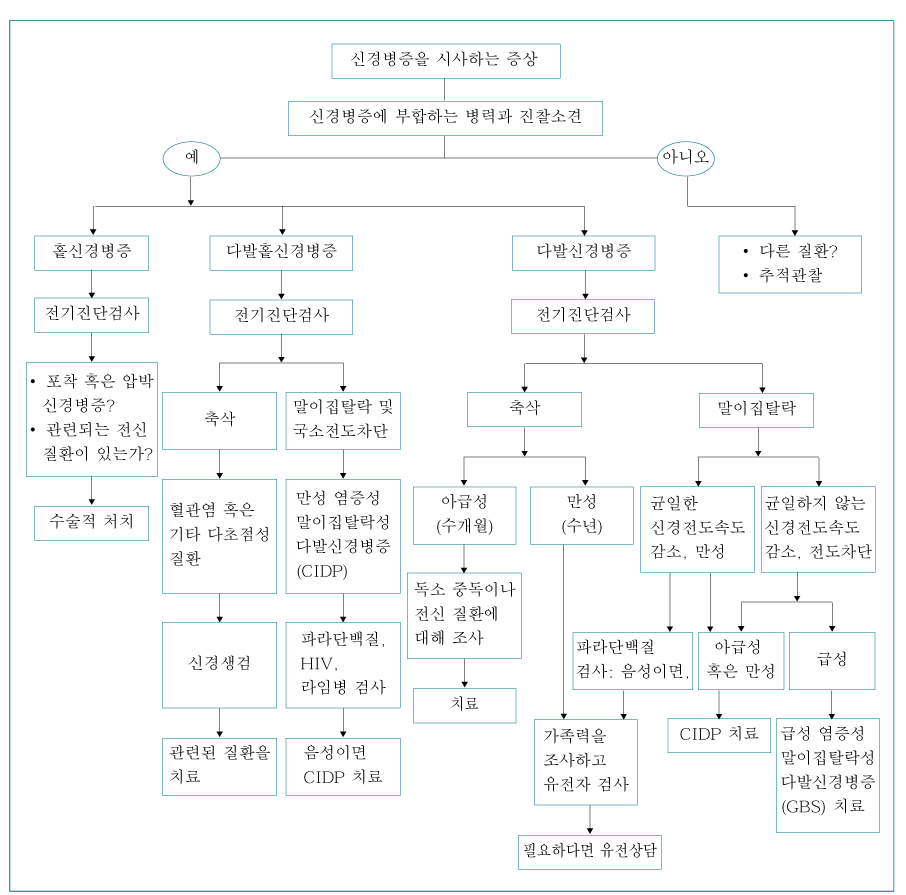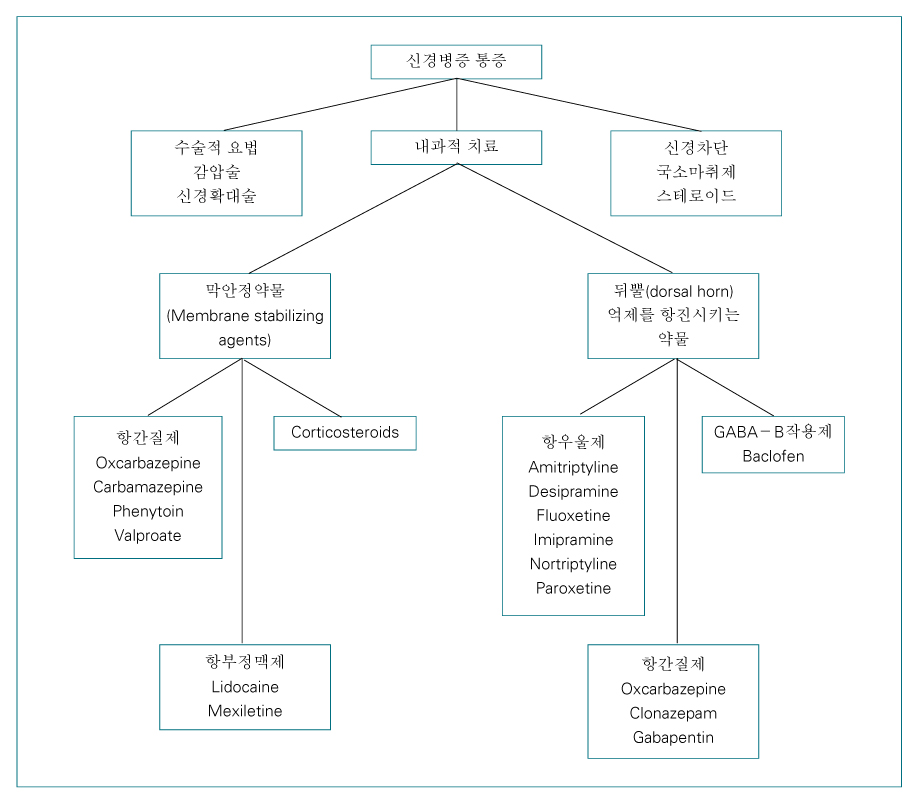J Korean Med Assoc.
2004 Oct;47(10):1002-1008. 10.5124/jkma.2004.47.10.1002.
Pharmacologic Treatment of Peripheral Neuropathy
- Affiliations
-
- 1Department of Neurology, Ajou University College of Medicine and Hospital, Korea. isjoo@ajou.ac.kr
- KMID: 2183537
- DOI: http://doi.org/10.5124/jkma.2004.47.10.1002
Abstract
- Peripheral neuropathy is a common neurological disorder and has a variety of identifiable causes such as diabetes, metabolic derangements, neurotoxic substances, and even genetic abnormalities. Even with a thorough evaluation, however, the underlying cause cannot be identified in a large portion of peripheral neuropathy. In addition to the diagnostic dilemma, the wide spectrum of clinical manifestations with a variety of combinations of altered sensation, muscle weakness, and autonomic symptoms in peripheral neuropathy also makes it difficult to introduce an appropriate management. Treatments for peripheral neuropathy are categorized according to the underlying conditions and the strategies designed to relieve peripheral nerve pain irrespective of the cause. This article summarizes the mechanisms of peripheral neuropathic pain and current pharmacologic treatments including tricyclic antidepressants and anticonvulsants.
MeSH Terms
Figure
Reference
-
1. Martyn CN, Hughes RAC. Epidemiology of peripheral neuropathy. J Neurol Neurosurg Psychiatry. 1997. 62:310–318.
Article2. Dyck PJ, Oviatt KF, Lambert EH. Intensive evaluation of referred unclassified neuropathies yields improved diagnosis. Ann Neurol. 1981. 10:222–226.
Article3. England JD, Asbury AK. Peripheral neuropathy. Lancet. 2004. 363:2151–2161.
Article4. Merskey H, Bogduk N, editors. Classification of chronic pain. 1994. 2nd ed. Seatle: IASP Press.5. Woolf CJ, Mannion RJ. Neuropathic pain: aetiology, symptoms, mechanisms, and management. Lancet. 1999. 353:1959–1964.
Article6. Wolf CJ. Dissecting out mechanisms responsible for peripheral neuropathic pain: Implications for diagnosis and therapy. Life Sci. 2004. 74:2605–2610.
Article7. Orza F, Boswell MV, Rosenberg SK. Neuropathic pain: Review of mechanisms and pharmacologic management. Neuro Rehabilitation. 2000. 14:15–23.
Article8. Dworkin RH, Backonja M, Rowbotham MC, Allen RR, Argoff CR, Weinstein SM, et al. Advances in neuropathic pain: diagnosis, mechanisms, and treatment recommendations. Arch Neurol. 2003. 60:1524–1534.9. Sindrup SH, Jensen TS. Pharmacologic treatment of pain in polyneuropathy. Neurology. 2000. 55:915–920.
Article10. Backonja MM. Use of anticonvulsant for treatment of neuropathic pain. Neurology. 2002. 59:Suppl 2. S14–S17.



